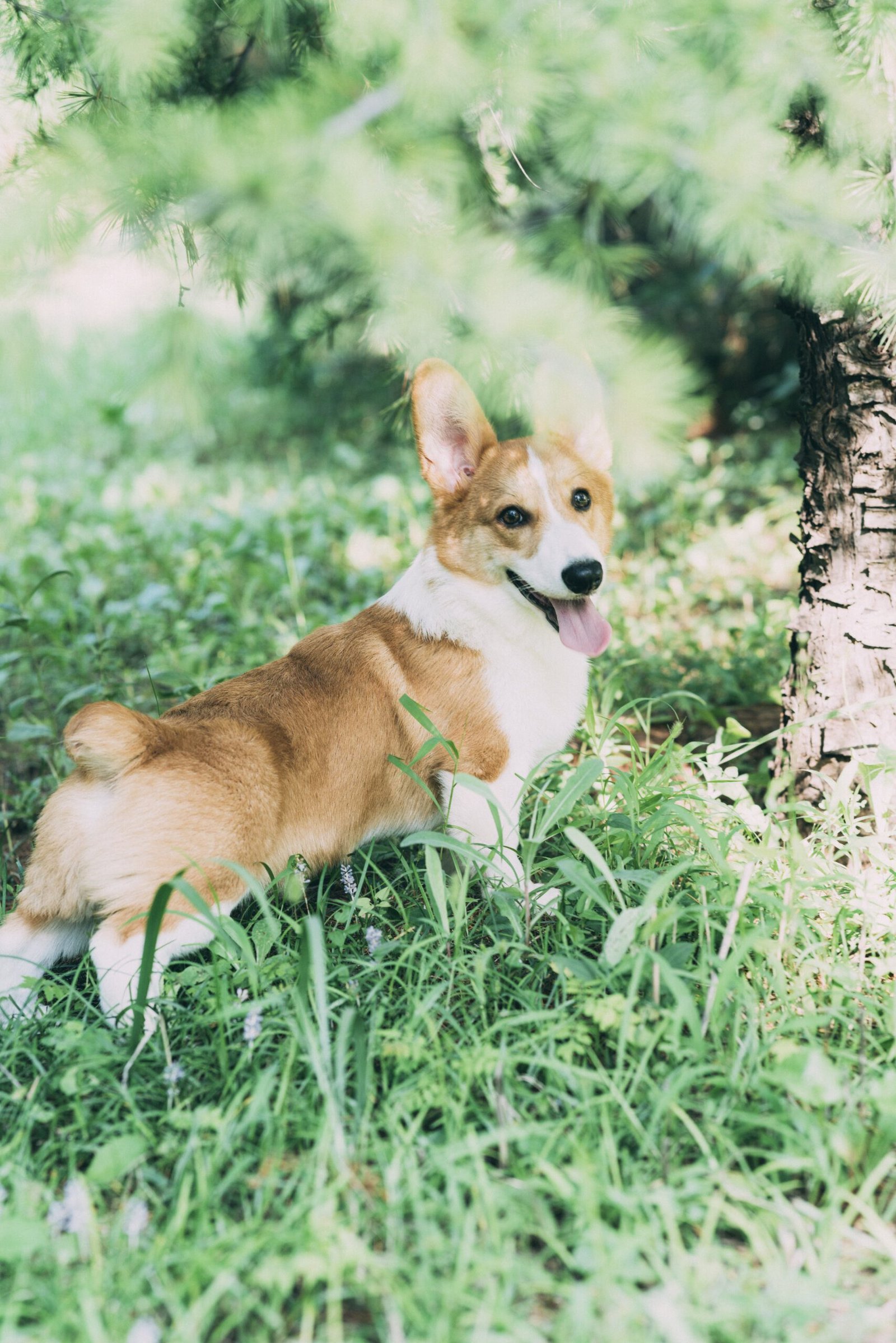Table of Contents
Are you a dog lover residing in Singapore? If so, you may have considered becoming a dog trainer to share your passion for these loyal companions. Look no further! This article is here to provide you with a comprehensive guide on how to embark on your journey as a dog trainer in Singapore. From understanding the unique challenges and requirements of training dogs in this bustling city-state to mastering effective training techniques, you will gain valuable insights and tips to kickstart your fulfilling career as a dog trainer. So, get ready to unleash your potential and make a positive impact on the lives of dogs and their owners in Singapore!

Choosing the Right Dog Trainer
When it comes to training your furry friend, it is crucial to find the right dog trainer who can help you and your pup achieve your training goals. With so many trainers out there, it can be overwhelming to make the right choice. Thankfully, there are a few key factors to consider when selecting a dog trainer.
Finding a Certified Dog Trainer
One of the first things to look for in a dog trainer is certification. A certified dog trainer has undergone the necessary education and training to effectively work with dogs and their owners. This certification ensures that the trainer has a solid understanding of canine behavior and training techniques.
There are several well-known certification programs for dog trainers, such as the Certification Council for Professional Dog Trainers (CCPDT) and the International Association of Canine Professionals (IACP). When researching trainers, be sure to inquire about their certification status and ask for proof if needed.
Researching Different Training Methods
Once you have found certified trainers in your area, it is essential to research the different training methods they use. Dog training methods can vary greatly, and it is important to find a trainer whose techniques align with your own beliefs and training goals.
Some common training methods include positive reinforcement, clicker training, and marker training. Positive reinforcement focuses on rewarding desired behaviors, while clicker training utilizes a distinct sound to mark desired behaviors for reinforcement. Marker training, on the other hand, involves using a verbal cue or a clicker to mark the desired behavior and then rewarding it.
By understanding and exploring different training methods, you can find a trainer who will use the techniques that resonate with you and your pup.
Understanding Dog Behavior
Before diving into specific training techniques, it is important to have a basic understanding of dog behavior. Dogs communicate through body language and have complex behaviors that are influenced by their instincts and past experiences.
Canine Psychology
Canine psychology explores the inner workings of a dog’s mind and helps us understand their behavior. Dogs are highly social animals with hierarchical instincts. It is important to recognize and respect their natural tendencies when training them.
Additionally, understanding how dogs perceive the world can aid in shaping their behavior. They rely heavily on their senses, especially scent and body language. By understanding these aspects of canine psychology, you can better communicate with and train your furry friend.
Common Behavioral Issues in Dogs
When it comes to training, addressing common behavioral issues is often a priority for dog owners. Some typical behavioral issues include aggression, separation anxiety, and excessive barking. These issues can stem from various factors such as fear, lack of socialization, or past traumatic experiences.
By understanding the underlying causes of these behaviors, trainers can develop effective strategies to modify them. Working with a knowledgeable trainer who understands these issues will help you address them in a positive and supportive manner.

Basic Training Techniques
Now that you have a foundation of dog behavior, it’s time to delve into basic training techniques. These techniques will form the building blocks of your dog’s training journey and will help establish a well-behaved and obedient pup.
Positive Reinforcement
Positive reinforcement is a widely recognized and effective training technique. It involves rewarding your dog with treats, praise, or playtime when they exhibit desirable behaviors. By associating these rewards with specific actions, your dog will learn to repeat those behaviors.
This technique focuses on reinforcing positive behavior rather than punishing undesirable behavior. By using positive reinforcement, you can cultivate a strong bond with your four-legged friend while encouraging good behavior.
Clicker Training
Clicker training is a popular approach that relies on a distinct sound, typically a clicker, to mark desired behaviors. The sound is followed by a reward, signaling to the dog that they have performed the desired action correctly. The sound of the clicker becomes a powerful signal that tells your dog they have done something right.
Clicker training is effective because it provides immediate and precise feedback to your pup. It helps them associate the sound with a reward, making the training process more efficient and enjoyable.
Marker Training
Similar to clicker training, marker training involves using a verbal cue or another distinctive sound to mark desired behaviors. The marker, such as the word “yes” or a specific sound, is used to signal to your dog that they have exhibited the desired behavior and will soon receive a reward.
Marker training is versatile and can be used in various scenarios. It helps communicate more effectively with your dog and encourages them to understand and repeat desired behaviors.
House Training
Teaching your dog proper bathroom habits is an essential part of their training. House training, also known as potty training, involves establishing a routine, implementing a reward-based system, and dealing with accidents in a positive manner.
Establishing a Routine
Establishing a consistent routine is crucial for successful house training. Dogs thrive on predictability, and by setting a schedule for their meals, walks, and potty breaks, you can help them understand when and where they should relieve themselves.
Take your pup outside at regular intervals throughout the day, especially after meals and naps. Be patient and allow them ample time to do their business. By sticking to a routine, you can effectively teach your dog where it is appropriate to eliminate.
Reward-Based System
Using a reward-based system is an effective way to reinforce proper potty habits. When your dog eliminates in the designated spot, immediately praise them and offer a small treat as a reward. This positive reinforcement creates an association between the act of eliminating in the right place and receiving a reward.
Consistency is key when implementing a reward-based system. Be sure to reward your dog every time they eliminate in the appropriate location to reinforce the desired behavior.
Dealing with Accidents
Accidents are bound to happen during the house training process, but it’s important to handle them in a positive and patient manner. If you catch your dog in the act of eliminating in the wrong place, interrupt them with a gentle noise, such as clapping your hands. Immediately take them outside to the designated elimination area and praise them if they finish there.
It’s essential not to punish your dog for accidents as it can lead to fear or anxiety. Instead, clean up any accidents using an enzymatic cleaner to remove the scent completely. This will discourage your dog from returning to the same spot.
With consistency, patience, and a positive approach, you can successfully house train your dog and create a clean and comfortable living environment for both of you.

Leash Training
Leash training is essential for every dog owner. It allows you to have control over your pup during walks and ensures their safety. Proper leash training involves choosing the right collar and leash, teaching loose leash walking, and overcoming leash reactivity.
Choosing the Right Collar and Leash
Selecting the right collar and leash is the first step in leash training. There are various options available, including flat collars, martingale collars, harnesses, and slip leads. Each option has its advantages and considerations, so it’s important to choose one that suits your dog’s size, breed, and behavior.
Consider consulting a professional trainer or researching the different types of collars and leashes to make an informed decision. The right equipment will make the leash training process more comfortable for both you and your pup.
Teaching Loose Leash Walking
Walking on a loose leash is a skill that every dog should learn. It involves teaching your dog to walk calmly beside you without pulling or lunging. This skill ensures a pleasant walking experience for both you and your furry friend.
One technique to encourage loose leash walking is to stop and stand still whenever your dog starts to pull. This teaches them that pulling will not get them where they want to go. When your dog walks beside you without pulling, reward them with treats, praise, or playtime, reinforcing the desired behavior.
Consistency is key when teaching loose leash walking. Practice in different environments and gradually increase distractions to help your dog generalize the behavior.
Overcoming Leash Reactivity
Leash reactivity refers to your dog’s tendency to lunge, bark, or growl at other dogs or stimuli while on a leash. It can be challenging to manage and can make walks stressful for both you and your pup.
Addressing leash reactivity requires patience and training. Redirecting your dog’s attention away from the triggers and rewarding them for calm behavior can help modify their reactivity. Consult with a professional dog trainer experienced in dealing with leash reactivity to develop an effective training plan tailored to your dog’s needs.
With the proper equipment, consistent training, and a positive approach, you can enjoy peaceful and enjoyable walks with your furry companion.
Socializing Your Dog
Socialization is a crucial aspect of your dog’s overall development. It involves exposing your pup to various people, animals, environments, and experiences to help them develop confidence and good manners. Proper socialization is key to ensuring your dog is well-adjusted and friendly in different situations.
Importance of Socialization
Socializing your dog from an early age is vital to shaping their behavior and temperament. It helps prevent fear, aggression, and anxiety by familiarizing them with different people, animals, and environments. A well-socialized dog is more likely to be comfortable in new situations and less prone to behavioral issues.
Puppy Socialization Classes
Puppy socialization classes are an excellent way to introduce your furry friend to other dogs their age in a controlled and supervised environment. These classes typically focus on basic obedience training, manners, and positive interactions with other pups. They also provide an opportunity for owners to learn about dog behavior and training techniques.
When selecting a puppy socialization class, ensure that the trainer uses positive reinforcement methods and follows a structured curriculum. This will ensure that your pup receives proper guidance and positive experiences during crucial developmental stages.
Organized Playdates
Organized playdates with well-socialized dogs can also contribute to your dog’s socialization. These playdates should be carefully planned and supervised to ensure the safety and well-being of all dogs involved. They provide an opportunity for your pup to interact with other dogs of different sizes, ages, and temperaments.
When organizing playdates, choose dogs that are friendly and have a good track record of socialization. Be sure to have enough space for the dogs to move around comfortably and provide toys and treats to keep them engaged during the playdate.
Remember, socialization is an ongoing process throughout your dog’s life. Regular exposure to different people, animals, and environments will help them remain confident, adaptable, and well-mannered.
Obedience Training
Obedience training focuses on teaching your dog basic commands and behaviors. These commands, such as sit, stay, and down, are fundamental for creating a well-behaved and obedient pup.
Teaching Basic Commands (Sit, Stay, Down)
Teaching basic commands is an essential part of obedience training. Start with simple commands like sit, stay, and down, and gradually move on to more complex ones.
To teach your dog to sit, hold a treat close to their nose and slowly move it backward over their head. As their head moves up, their bottom will naturally lower into a sitting position. Once they are in a sit, reward them with the treat and praise.
For stay, ask your dog to sit or lie down and hold your hand out, palm facing them, in a stop signal. Take a step back and say “stay.” If your dog stays in place, return to them and give them a treat and praise. Gradually increase the duration and distance of the stay over time.
To teach your dog to lie down, start with them in a sitting position. Hold a treat near their nose and slowly move it down to the ground, causing them to follow it with their body until they are lying down. Reward them with the treat and praise once they are in the down position.
Consistency, patience, and positive reinforcement are crucial when teaching basic commands. Short, frequent training sessions throughout the day are more effective than long, exhausting sessions.
Improving Recall
Having a reliable recall command is essential for your dog’s safety and well-being. Recall training involves teaching your pup to come to you when called, regardless of distractions.
Start recall training in a quiet, familiar environment with minimal distractions. Say your dog’s name followed by the command “come” in a cheerful tone and reward them when they reach you. Gradually increase the distance between you and your pup and introduce mild distractions.
When practicing recall, avoid calling your dog for unpleasant reasons, such as giving medication or ending playtime. Make coming to you a positive and rewarding experience every time.
Consistently reinforcing recall training throughout your dog’s life will help maintain a strong recall command and ensure their safety in various situations.
Training for Specific Commands
In addition to basic commands, you may want to train your dog for specific commands that align with your lifestyle and activities. These commands can include things like “leave it,” “drop it,” “heel,” and “wait.”
“Leave it” teaches your dog to ignore and not pick up objects that may be harmful or inappropriate. This is particularly useful when walking in public spaces or encountering potentially toxic substances.
“Drop it” is useful when your dog has picked up an item that needs to be released. It can prevent potential harm, particularly if the object is dangerous or not suitable for them.
“Heel” is a command that teaches your dog to walk calmly by your side without pulling. It is particularly useful during walks or when navigating crowded areas.
“Wait” is a command that asks your dog to pause and remain stationary until given a release cue. This command is useful in various situations, such as before crossing the road or entering and exiting a car.
Training for specific commands requires additional time and effort, but it can greatly enhance your dog’s behavior and responsiveness. Seek guidance from a professional trainer if needed, as they can provide valuable tips and techniques.
Behavioral Training
Behavioral training focuses on addressing specific behavioral issues that may arise in your dog. It involves understanding the root causes of the behaviors and implementing appropriate training techniques to modify them.
Addressing Aggression
Aggression in dogs is a serious behavioral issue that should be addressed with professional guidance. Aggression can manifest in various forms, such as growling, biting, or lunging. It can stem from fear, territorial instincts, or past traumatic experiences.
Seek the help of a professional dog trainer or animal behaviorist experienced in aggression cases. They will conduct a thorough assessment of your dog’s behavior, identify the underlying causes, and develop a customized training plan to modify the aggression. It is crucial to address aggression promptly and effectively to ensure the safety of everyone involved.
Managing Separation Anxiety
Separation anxiety occurs when a dog becomes distressed when separated from their owner or when left alone. It can result in destructive behavior, excessive barking, or attempts to escape.
To manage separation anxiety, gradually desensitize your dog to your departures and practice short absences. Start by leaving for a few seconds and gradually increase the duration over time. Provide your dog with engaging toys, treats, or a favorite blanket to help alleviate their anxiety during your absence.
Consulting with a professional trainer experienced in separation anxiety can provide additional guidance and support. They can help you develop a comprehensive training plan tailored to your dog’s specific needs.
Dealing with Excessive Barking
Excessive barking can be a nuisance and may disrupt the peace in your home or neighborhood. Understanding the root causes of excessive barking is essential in addressing the behavior effectively.
Barking can be triggered by boredom, fear, territorial instincts, or attention-seeking. Identify the underlying cause of your dog’s excessive barking and address it accordingly. Provide mental and physical stimulation, create a calm and secure environment, and teach your dog the “quiet” command.
It is important to note that some breeds are more prone to excessive barking due to their genetic predisposition. However, with consistent training and positive reinforcement, you can help manage and minimize excessive barking in your furry friend.
Trick Training
Trick training goes beyond basic obedience commands and focuses on teaching fun and entertaining tricks. It provides mental stimulation for your dog and strengthens your bond with them.
Popular Tricks to Teach
There are countless tricks you can teach your dog, limited only by your imagination and your pup’s capabilities. Some popular tricks include “shake hands,” “roll over,” “play dead,” “spin,” and “fetch.”
When teaching tricks, break them down into smaller, easily achievable steps. Reward your dog for each successful attempt and gradually increase the difficulty level as they progress.
Using Positive Reinforcement
Positive reinforcement is crucial when training tricks. It not only motivates your dog to perform the desired behavior but also ensures that the training experience is enjoyable for both of you.
Use treats, praise, and playtime as rewards when teaching tricks. Avoid any form of punishment or negative reinforcement, as it can diminish your dog’s enthusiasm and hinder their progress.
Trick training is a fantastic way to bond with your furry companion and keep their mind active and engaged. Get creative, have fun, and celebrate your dog’s achievements along the way.
Advanced Training Techniques
If you and your dog have mastered the basics and are eager for more advanced challenges, there are several training techniques you can explore.
Off-Leash Training
Off-leash training is a more advanced skill that requires a high level of trust and obedience from your dog. It involves teaching your dog to respond reliably to commands and remain under control even without a leash.
Before attempting off-leash training, ensure that your dog has excellent recall and can reliably follow basic obedience commands. Start in a secure and controlled environment, gradually increase the distractions, and always prioritize safety.
Consulting with a professional trainer experienced in off-leash training can provide valuable guidance and ensure a smooth progression throughout the training process.
Canine Sports and Agility Training
Canine sports and agility training are exhilarating activities that allow dogs to showcase their physical abilities and mental acuity. These activities include agility courses, flyball, dock diving, and obedience trials.
Canine sports require a high level of training, focus, and teamwork between you and your dog. Enrolling in specialized classes or joining a local dog club can provide access to equipment and experienced trainers who can guide you and your pup through the world of canine sports.
Assistance and Therapy Dog Training
Assistance and therapy dog training involves teaching your dog specific skills to help people with disabilities or individuals in need of emotional support. These highly trained dogs play a crucial role in improving the lives of those they assist.
If you are interested in training your dog for these purposes, it is essential to work with professional trainers or organizations that specialize in assistance and therapy dog training. They will guide you through the process of selecting an appropriate dog, training the necessary commands, and preparing for certification.
Assistance and therapy dog training requires dedication, patience, and a genuine desire to make a positive impact in the lives of others.
Training Dogs in Singapore: A Comprehensive Guide
Becoming a dog trainer in Singapore involves understanding various aspects of dog behavior, training techniques, and specific challenges in the local context. To excel as a dog trainer, it is essential to have a solid foundation in canine psychology, be knowledgeable about common behavioral issues, and possess effective training techniques.
When choosing a dog trainer in Singapore, seek certified professionals who have undergone relevant education and training. Certification programs such as the Certification Council for Professional Dog Trainers (CCPDT) and the International Association of Canine Professionals (IACP) provide assurance that the trainer has met specific standards in terms of knowledge and skills.
Researching different training methods is also crucial to finding a dog trainer who aligns with your training goals and beliefs. Positive reinforcement, clicker training, and marker training are some popular methods that focus on rewarding desired behaviors to encourage their repetition.
Understanding dog behavior is fundamental to successful training. Canine psychology helps interpret canine instincts and behaviors, while knowledge of common behavioral issues enables trainers to address and modify undesirable behaviors in a positive and effective manner.
Basic training techniques such as positive reinforcement, clicker training, and marker training provide the foundation for teaching desired behaviors. These techniques focus on rewarding positive behavior rather than punishing unwanted behavior, fostering a positive and strong bond between dog and owner.
House training, leash training, socialization, obedience training, behavioral training, trick training, and advanced training techniques are all important facets of a comprehensive dog training program. Each section explores various aspects of these training topics, providing information and tips on how to tackle specific challenges and achieve training goals.
Overall, training dogs in Singapore requires dedication, patience, and a commitment to positive training methods. By understanding dog behavior, choosing the right dog trainer, and implementing effective training techniques, you can build a strong bond with your furry friend and enjoy a well-behaved and happy canine companion.



